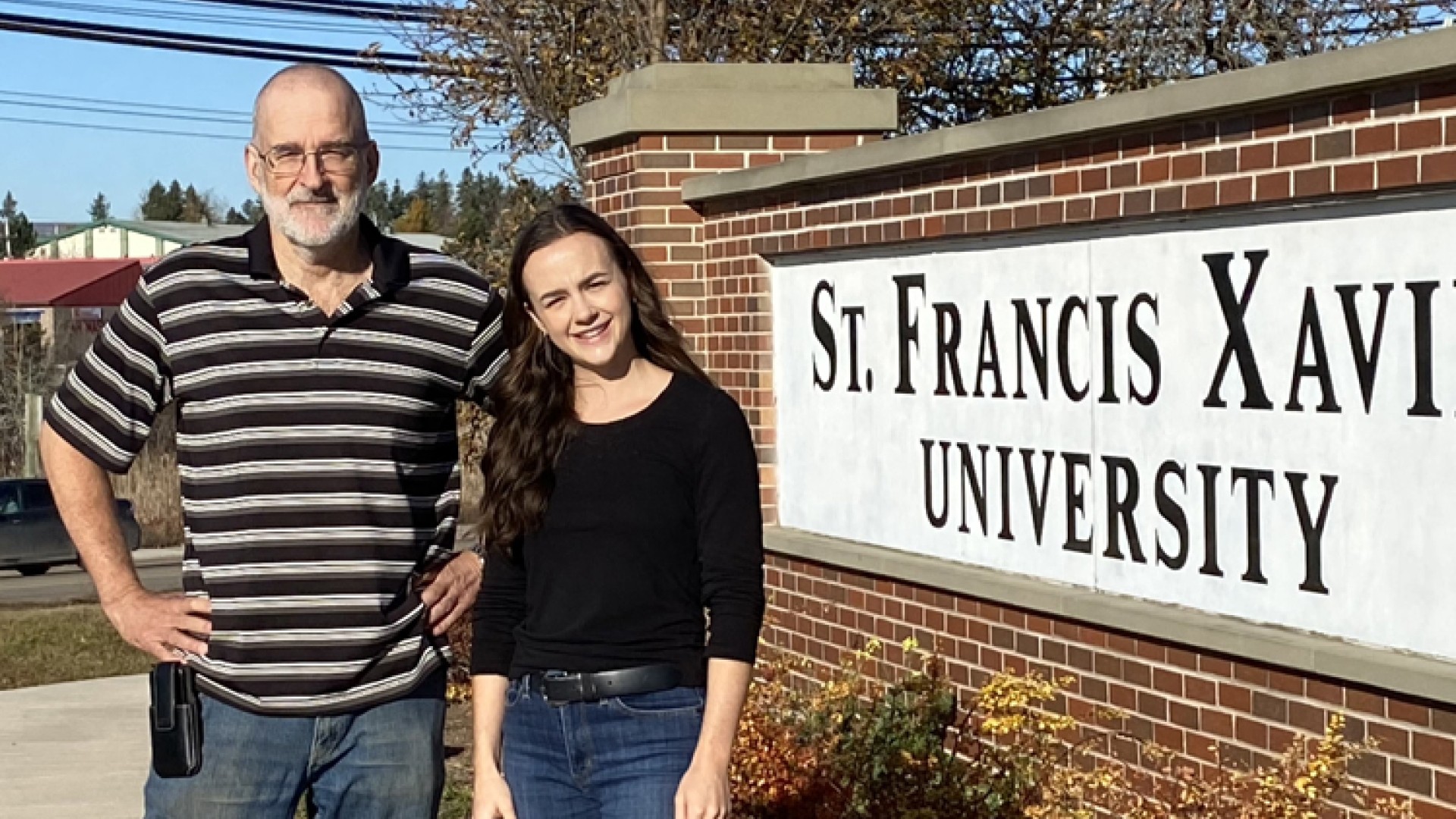
StFX researchers have found that the ecosystem at Boat Harbour, a body of water in Pictou, NS receiving effluent from a nearby mill for over 50 years, should after remediation be able to support organisms commonly found in estuarine ecosystems along coastal Nova Scotia, in particular, two primary producers, eelgrass and salt marsh grass.
Lead author of the study, published in the Canadian Journal of Fisheries and Aquatic Sciences, is Megan Fraser, a 2020 StFX aquatic resources and biology graduate from New Glasgow, NS, who completed the research while an undergraduate student at StFX. She is a co-author on the study with her supervisor, aquatic resources professor Dr. Jim Williams. StFX biology faculty Drs. Russell Wyeth and David Garbary are also co-authors.
“It felt great to have this research published in CJFAS. This is my first published paper and after all of the hard work that went into this research, to have it published was very rewarding,” says Ms. Fraser, now completing a masters in environmental studies at Dalhousie University, where her thesis is continuing research on Boat Harbour remediation.
Dr. Williams says he is delighted they were able to get the paper in CJFAS. “It's a good journal with a lot of the target audience we were looking for. As a scientist, it's always satisfying to have research published, and as a supervisor, I'm particularly proud of Megan's hard work in seeing this through.”
Dr. Williams says the research, which has been ongoing for several years, came about after he submitted a proposal outlining the eelgrass and salt marsh grass project to Nova Scotia Lands, the provincial agency overseeing the cleanup, which considers proposals from university researchers that are relevant to the objectives of the remediation. The proposal was approved for funding.
“The big environmental problem in Boat Harbour is a layer of contaminated sediment on the bottom,” he says.
WOULD IT SUPPORT GROWTH
“The removal of this contaminated layer is the major focus of the cleanup. I wanted to know if the original estuarine sediment in Boat Harbour, which is what will be left behind after the remediation, would still support the growth of two very important plants, eelgrass and salt marsh grass. Since the cleanup was years away, we designed and built a device that could remove large plugs or cores of this clean pre-industrial sediment, and then we inserted the cores into a local estuary, where we could transplant eelgrass and salt marsh grass.
“We found that the growth and survival of the two estuarine plants was the same in the pre-industrial Boat Harbour sediment as it was in reference sediment from the local estuary. This bodes well for the recovery of Boat Harbour after the remediation.”
Dr. Williams says he lectured about Boat Harbour in StFX’s Aquatic Resources Program for 20 years, and he sees it as a very complex and interdisciplinary case study. “It clearly represents an example of environmental racism. From a scientific point of view, the remediation process presents some considerable challenges. When an opportunity for research funding related to Boat Harbour presented itself at the same time that I was winding down my teaching activity, the timing was ideal.”
Ms. Fraser says being from Pictou County, and knowing the impacts of Boat Harbour on her community, and also being interested in aquatic sciences, this was a project she was keen to be a part of. She had Dr. Williams as a professor and approached him in her first year at StFX to ask if he was looking for a research assistant for his research on Boat Harbour. “We got funding in my second year to do the project and I was thrilled to be a part of it,” she says.
HIGHLIGHT OF TIME
“Being a part of undergraduate research was the highlight of my time at StFX. It challenged me in the best way possible and helped me to discover what interests me academically and professionally.”
Ms. Fraser says doing research as an undergraduate is invaluable and teaches you how to apply what you learn in the classroom, how to design a research project, problem solve to overcome challenges along the way and gives you hands on experience.
Small institutions like StFX typically have many more opportunities for undergraduates to be involved in research, Dr. Williams says. “Our Aquatic Resources Program requires our students to do a senior research project, and both Tyler Winsor (now completing his masters at the University of Winnipeg) and Megan used aspects of their Boat Harbour research as their capstone research project.”
Ms. Fraser conducted research on the topic with Dr. Williams for over two summers, including one as an Irving Research Mentorship Award recipient.
This research is, in part, made possible by the Government of Canada Research Support Fund.

